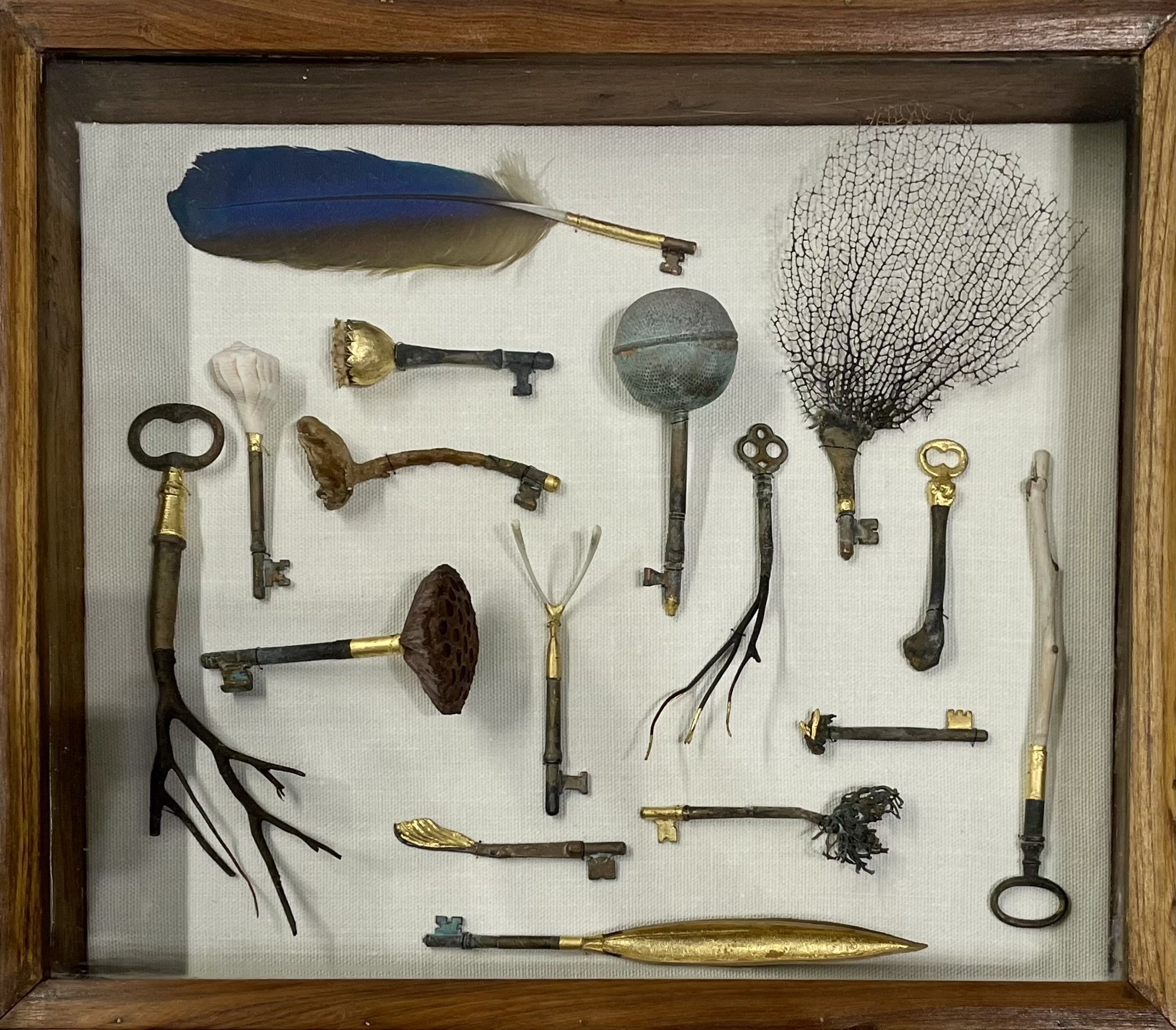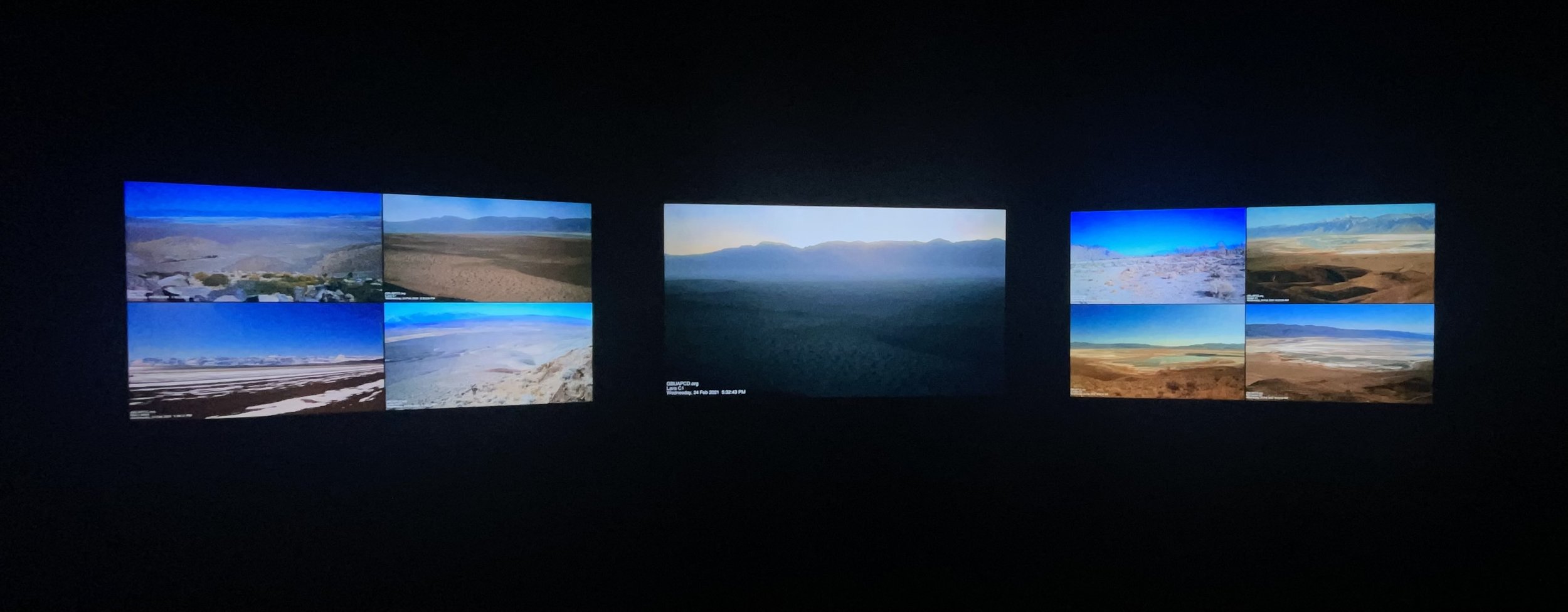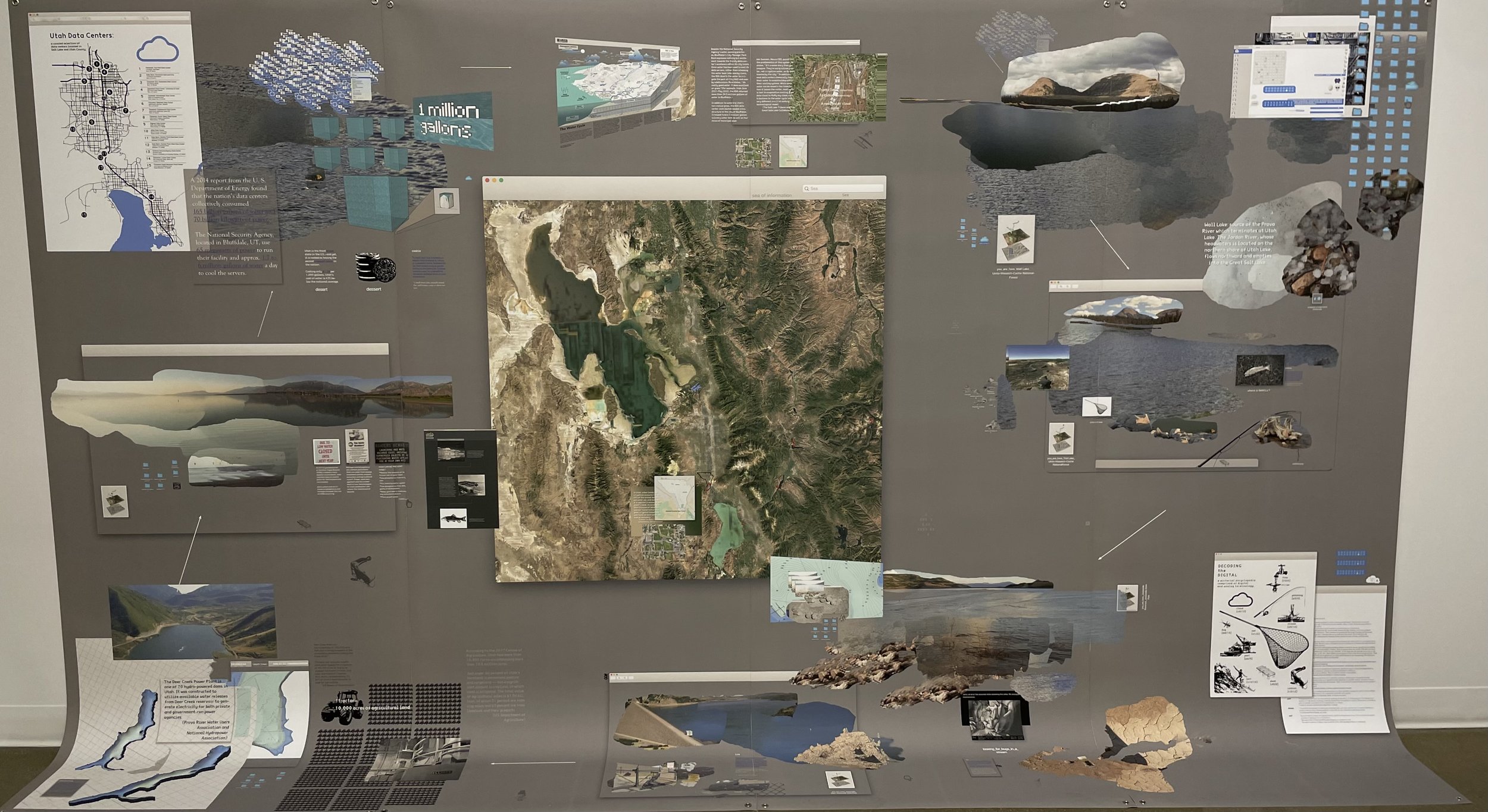Between Life & Land: Crisis @ The Kimball Art Center
The climate crisis affects every community on earth; whether it be rising sea levels or catastrophic drought, the changing climate has caused destruction worldwide. Humanity seems to be at the tipping point where we must take steps to regenerate the earth and its processes before it is too late. The question is, how?
The Kimball Art Center in Park City, Utah, tackles this question in the final installment of their three-part, yearlong exhibition series on the climate crisis. Between Life & Land: Crisis, follows Between Life & Land: Material (December 9, 2022 – April 9, 2023) and Between Life & Land: Identity (April 21, 2023 – July 9, 2023). Each iteration explored a different aspect of humanity’s relationship with the land. Material explored our physical connection with the earth, Identity the importance of land in shaping our community and values, and finally, in Crisis, how climate change is reshaping our relationship with the earth. Importantly, Crisis allows for a positive vision to imbed itself within the dire subject of environmental degradation. emerges through encouragement to reinvigorate Indigenous ways of thinking and to restore our relationship with the earth.
Between Life & Land provides a platform for an incredible range of voices, from Indigenous artist collectives to Utah-Based and international individuals. This combination of perspectives creates a diverse symphony that encourages viewers to reconsider their place within the land and work towards preserving our futures.
The exhibition begins on a relatively positive note, highlighting the potential of reconsidering our way of thinking and restoring older, ancestral epistemologies. Opening with soundscapes by Meditation Ocean Constellation, of which droning tones create a meditative lull, viewers are encouraged to consider the potential of human interaction with the land. Displayed on the back wall is a text piece by DesertArtLAB, an environmental arts collaborative focusing on Indigenous perspectives. In their textual work, Huehuetlatolli: Words of the Elders (2017), the group refers to “Huehuetlatolli,” an Aztec oral tradition of promoting communal responsibility. Their exclamation, “Act! Take care of the things of the earth,” resonates today and is a powerful start to the exhibition. This piece reminds us of the perils of inaction and that, through proper action, the earth can be nurtured and restored. The DesertArtLAB work promotes ethical stewardship of the land through the nurturing of our environment as opposed to exploitation and waste of resources. In this piece, one can imagine a different reality in which the land is sustainably cultivated. This is a bleak reminder of the current state of our environment. But it is equally an encouraging invitation to act, perhaps through the reintegration of Indigenous knowledge into society.
In the vein of imagining a different environmental reality to our own is Beth Krensky’s Keys to Open the Beginning Before the End (2022). Here, the Utah-based artist utilises spirituality in her environmentalism. To explore humanity’s evolving relationship with the land, Krensky created a series of skeleton keys that combine antique keys with natural debris, such as feathers and seed pods. The skeleton key, one that can unlock any door, is often viewed as symbolic of the opening of worlds beyond our own; and here, Krensky’s keys imply the potential of unlocking a new world, one that has been merged or rejuvenated by natural elements and processes. The emphasis on transformation holds a hope, much like the DesertArtLAB work, that the evolution of environmental care is still possible in our landscape.
While this exhibition commences with messages about how we might regenerate our
environment, the realities of environmental degradation are displayed in equal measure. The Indigenous art collective Postcommodity presents a video installation, Going to Water (2021), that captures the effects of human intervention on the landscape of the American Southwest. The collective displays nine time-lapses of different viewpoints in southern California’s Owens Valley Lake. This area was once called the “place of flowing water” by the Indigenous Paiute nation, but today the valley is arid with little hint of the once full lake. This transformation came after the water supply was diverted to fill the Los Angeles Aqueduct, a process that quickly drained the lake and damaged local ecosystems. The dry lakebed now produces dust storms that threaten human health. The time-lapses are set in time to a cacophonous, droning soundtrack which pulls the viewer into a full-body experience of sound. Adding to this experience is the complete lack of light in the room, leaving the viewer absorbed in the capture of dust storms and dry land. There is a desolation in the work, one that is heightened with the understanding that human intervention was the culprit that altered the landscape.
Postcommodity’s work holds special resonance in Utah, where water scarcity is a pressing issue. The group was in residence at the Kimball Art Center in the summer of 2023, where they studied Utah’s Great Salt Lake, which is under threat of drought and completely disappearing. The tenuous state of the lake and the thread of its disappearance mirrors Going to Water, making its display incredibly poignant.
Utah’s relationship with water and humanity’s involvement in furthering droughts and water scarcity is explored more in Tiana Birrell’s work The Cloud Cycle (2023). Here, she investigates the data servers of Utah’s Salt Lake County and the incredible volume of water needed to support the cooling of these servers. This monumentalised infographic reveals the dire state of Utah’s water supply and how our everyday use of the cloud deteriorates one of the state’s most precious resources. However, it also reveals how the institutions running these data centres, such as the National Security Agency, use drinking water to cool the servers instead of untreated water. This piece presents a jarring juxtaposition. One of a drying-up lake, a state in perpetual drought, and an industry using millions of gallons of drinking water to hold our data. This piece makes it clear that the current modern lifestyle is not in accord with environmental preservation and that if we want to repair our environment, we must make radical adjustments to our collective thinking.
Thus, the need to preserve the environment in Utah is incredibly important. Warming temperatures decrease snowfall in the area, harm ski-based tourism, and negatively impacts the mountain snowpack and natural reservoirs, which diminishes the state’s water supply. This only begins to scratch the surface of the dangers posed by climate change in Utah, with wildfires, ecosystem destruction, and reduced agriculture already taking hold throughout the state.
of a state in danger, Between Life & Land: Crisis is a poignant reminder of the necessity of repairing the human relationship with the land and the environment. Though the exhibition leaves a viewer on a harrowing note of desolation and arid isolation, one can return to the Words of the Elders and the skeleton keys to imagine that, with shifts in action, these environments may be regenerated or developed into new and sustainable lands.
*Between Life & Land: Crisis at the Kimball Art Center in Park City, Utah has now passed.
Their upcoming exhibition, Lee Mingwei: The Gifts of Connection, will be open from November 17, 2023 to February 25, 2024.
To keep up-to-date with the programming, events, or news at The Kimball Art Centre, Utah, please see their website and Instagram.
Maria Whitby
Contributing Writer, MADE IN BED






